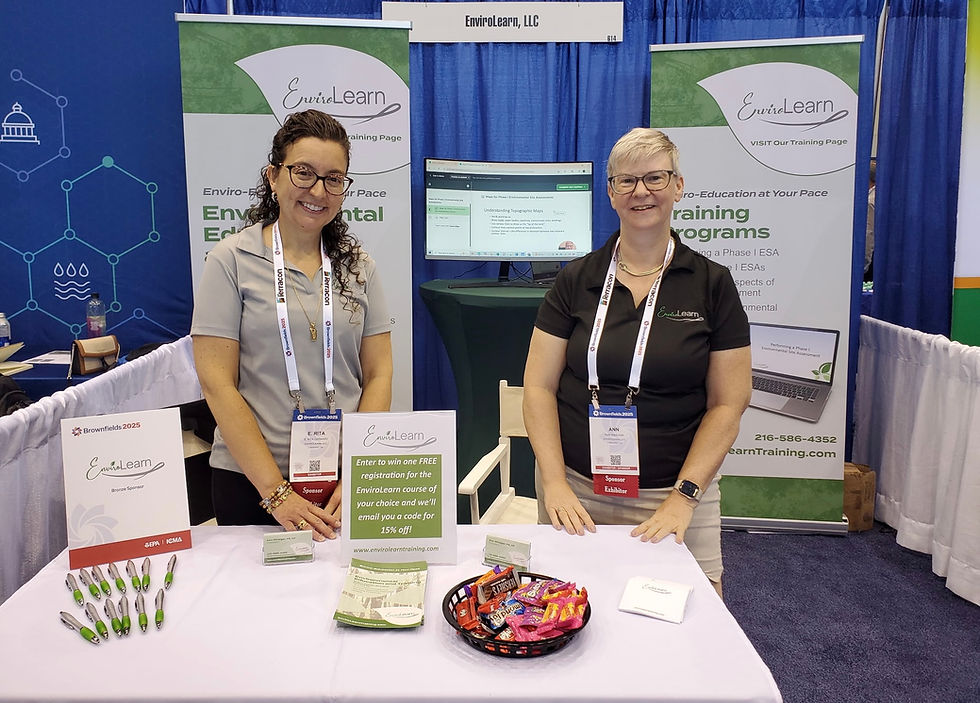Maps in Environmental Consulting
- Ann Winegar

- Oct 3, 2024
- 2 min read
Updated: Oct 4, 2024
Maps are an incredibly rich resource that I use on a daily basis as an environmental consultant. To me, that’s one of the most exciting aspects of a career in environmental consulting, because I have always loved interpreting—and making—maps. My dad taught me at an early age to read road maps, and when playing with my friends, I was the one who would draw the treasure map. When I decided to pursue a geology degree, I thought, “There’s maps involved? Yeah! Sign me up!”
As we recently finished recording our most recent EnviroLearn course, Maps for Phase I Environmental Site Assessments, it got me thinking about the importance of being able to understand and interpret maps in all aspects of environmental consulting. It’s like a treasure hunt for environmental information!
We use topographic and geology maps to help us determine how groundwater and contamination will migrate in the subsurface. This helps us in Phase I ESAs to assess whether/how releases will affect the subject property. We also use them to help us plan monitoring well and sample locations when conducting a Phase II ESA. Historical maps such as fire insurance maps and old atlases are used to help us determine historical uses and features of properties. We use maps to see where other sites are in relation to the subject property—such as the maps included with regulatory database reports.
Maps can both give us complex information and we can use them to present information to help stakeholders make decisions regarding a property. Potentiometric surface (groundwater) and iso-concentration (plume) maps are used to show direction of groundwater and contaminant flow and extent of contamination. We also depict analytical data and/or draw areas of contamination on maps.
And, as environmental consultants, we often need to find properties that are a little “off the beaten path”. We will use maps to help us figure out how to get to the subject property—although these days our phones can usually do most of the work for us. I remember in the early days of my career, we would highlight our route on a street map and jot down directions before heading out into the field. I was so excited when the mapping platforms came out and we could print out a map and directions. Then we moved up to having a GPS unit, and finally (wow!) we have GPS mapping right on our phones!
These are just a few of the ways that we use maps in environmental consulting. What other ways can you think of? How do you use maps in your daily work?





Comments